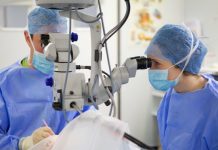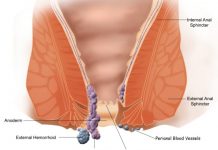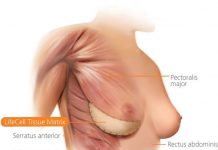Battling breast cancer is traumatic on many levels – the pain and the physical toll that the disease and its treatment takes on you, as also the emotional scarring that can result, lumpectomy or mastectomy is required to be performed.
Issues of self esteem and confidence may be inextricably linked to this, making it all the more important to have breast reconstructive surgery performed. There are psychological issues and quality of life improvements that can result.
Breast reconstructive surgery typically may take multiple operations and follow up and recovery may be protracted.
Breast and nipple reconstruction, and other procedures to achieve symmetry can typically make the procedure long and laborious.
Also one runs the same risks as one does with cosmetic procedures when implants are used. The main options for breast reconstruction surgery are:
Implant: The most widely used breast implants are saline filled or of silicon. It is possible in some cases to insert an implant at the time of the mastectomy, so that the breast tissue that is removed is replaced by the artificial implant. This is known as the one-stage reconstruction.
The two stage reconstruction is or delayed reconstruction is performed by using a tissue expander, over a period of 4 to 6 months to stretch the area gradually and then insert implants in the area. In the alternative the expanders are left in place as the implants.
Tissue flap Procedures: Here tissue from one’s own body; the back, thighs, tummy or buttocks is used to reconstruct the breast.
The TRAM flap (transverse rectus abdominis muscle flap) used material from the tummy area, and the latissimus dorsi flap, uses tissue from the upper back and these are the two most common tissue flap procedures used.
In the tram flap procedure, fat, skin and blood from the abdomen are used to reconstruct the breast and other implants may not be used at all. This also functions like a tummy tuck and will tone and tighten it. In the latter procedure weakness in the arm, shoulder or back could result.
Though there is the problem of having two surgery and scar sites (where the tissue was removed and where it was placed) there is no problem here of rupture or replacement; also the tissue behaves more naturally since it is part of the body to begin with.
New and better procedures are constantly evolving for breast reconstruction surgeries, so it is best to consult with a specialist to consider your options.














